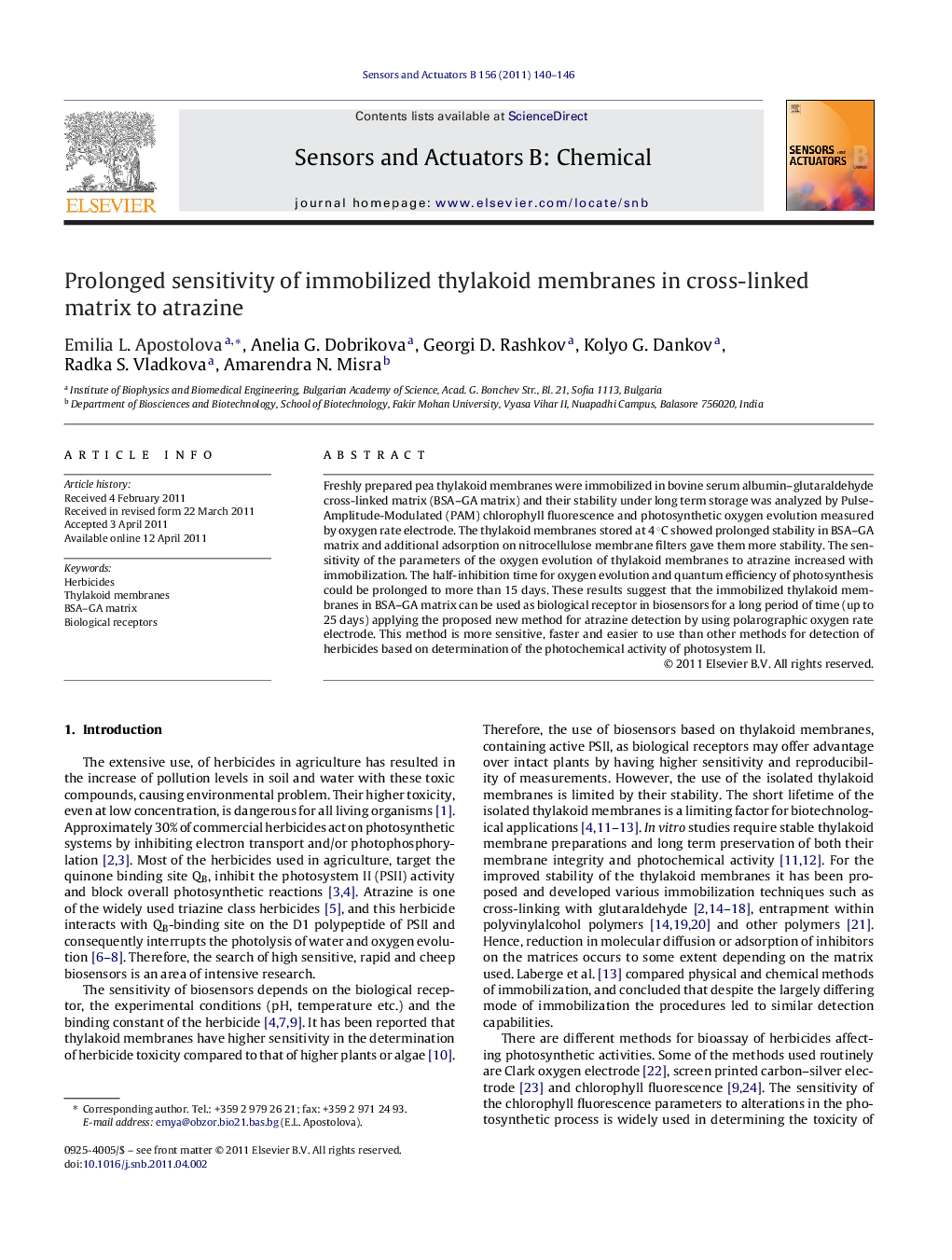| Article ID | Journal | Published Year | Pages | File Type |
|---|---|---|---|---|
| 740813 | Sensors and Actuators B: Chemical | 2011 | 7 Pages |
Freshly prepared pea thylakoid membranes were immobilized in bovine serum albumin–glutaraldehyde cross-linked matrix (BSA–GA matrix) and their stability under long term storage was analyzed by Pulse-Amplitude-Modulated (PAM) chlorophyll fluorescence and photosynthetic oxygen evolution measured by oxygen rate electrode. The thylakoid membranes stored at 4 °C showed prolonged stability in BSA–GA matrix and additional adsorption on nitrocellulose membrane filters gave them more stability. The sensitivity of the parameters of the oxygen evolution of thylakoid membranes to atrazine increased with immobilization. The half-inhibition time for oxygen evolution and quantum efficiency of photosynthesis could be prolonged to more than 15 days. These results suggest that the immobilized thylakoid membranes in BSA–GA matrix can be used as biological receptor in biosensors for a long period of time (up to 25 days) applying the proposed new method for atrazine detection by using polarographic oxygen rate electrode. This method is more sensitive, faster and easier to use than other methods for detection of herbicides based on determination of the photochemical activity of photosystem II.
